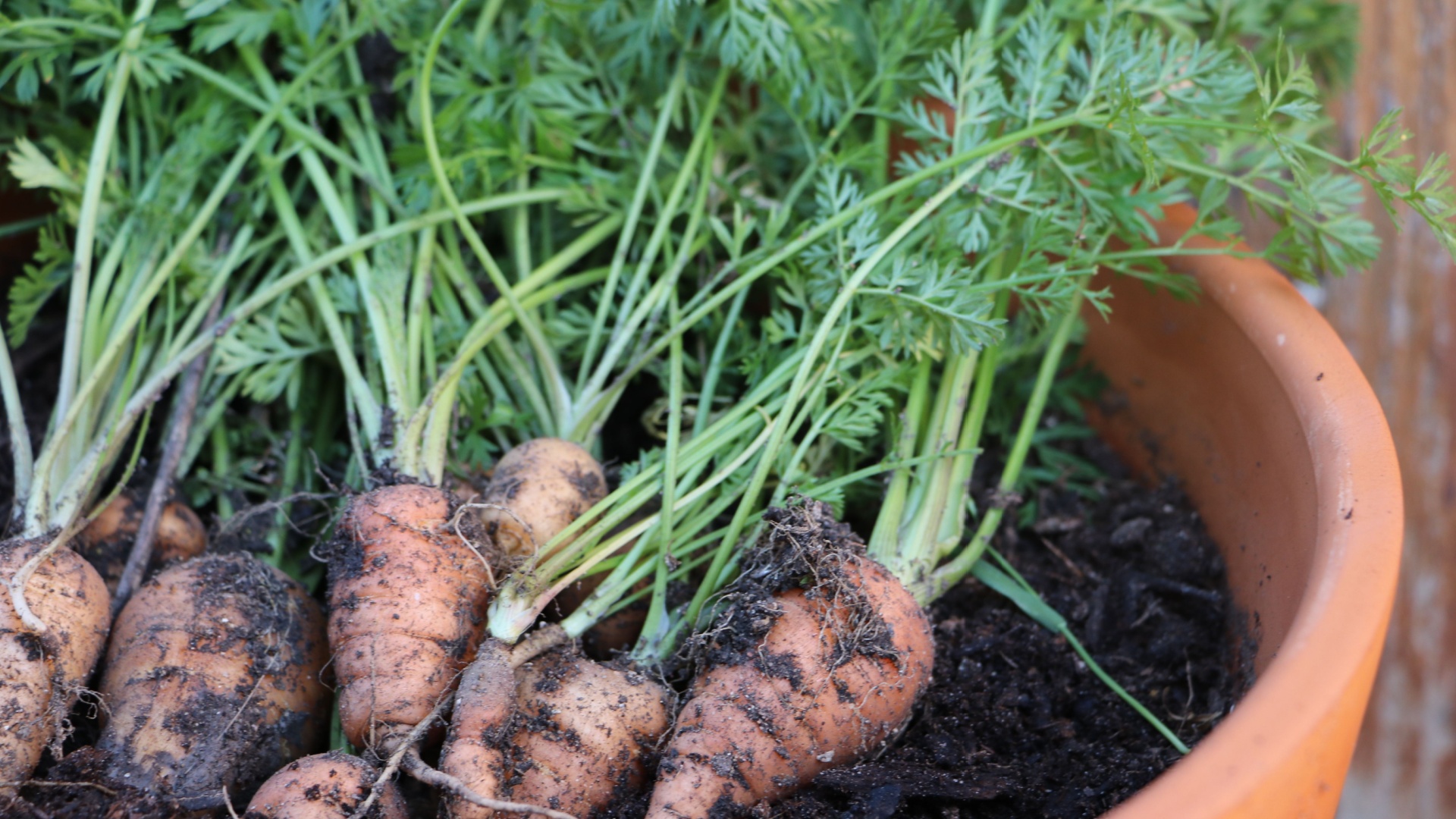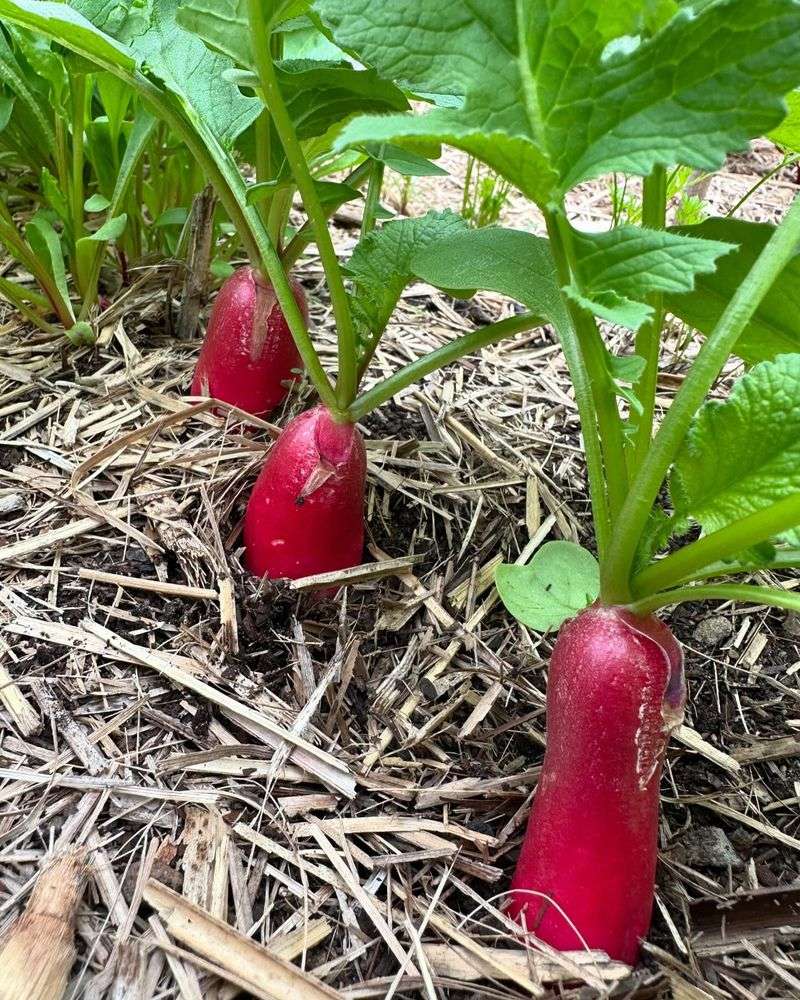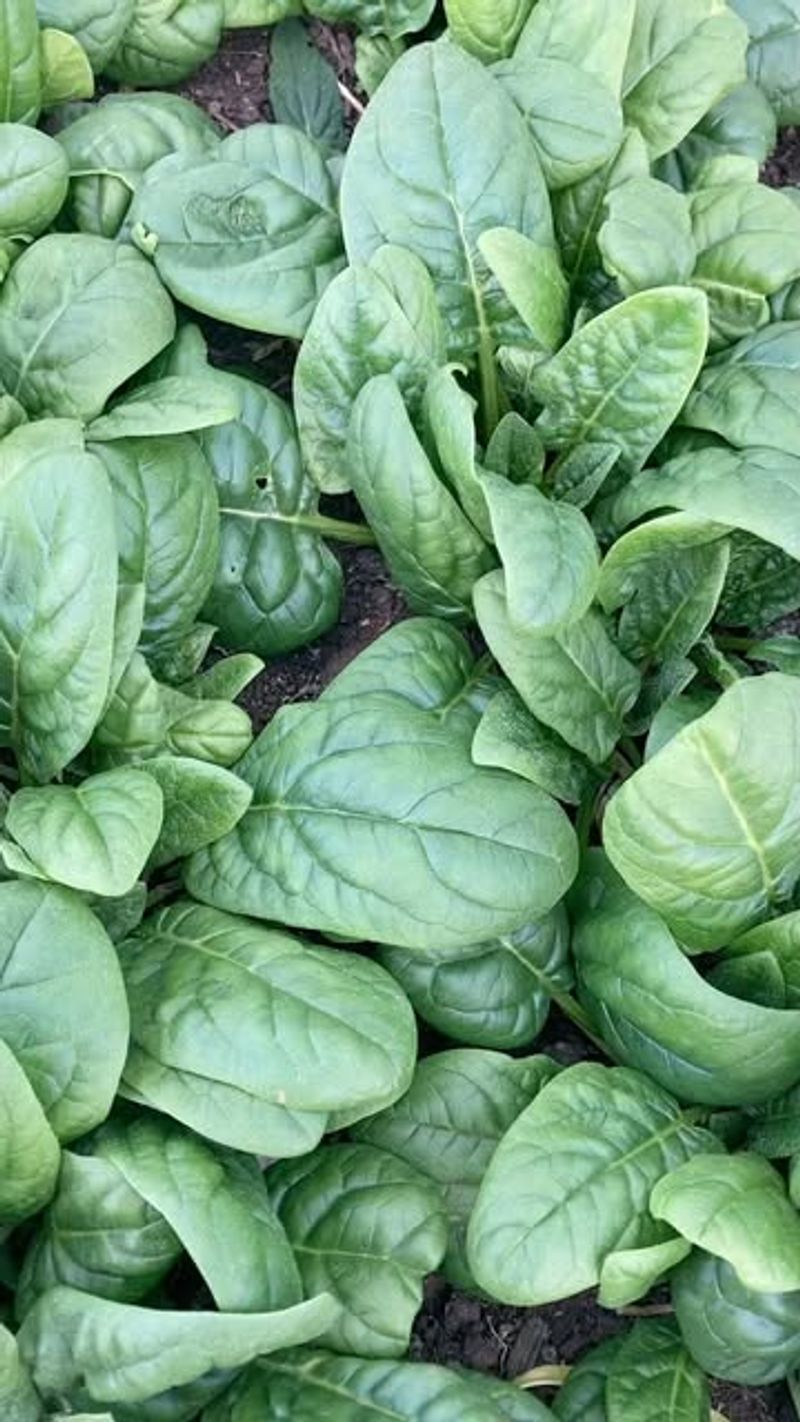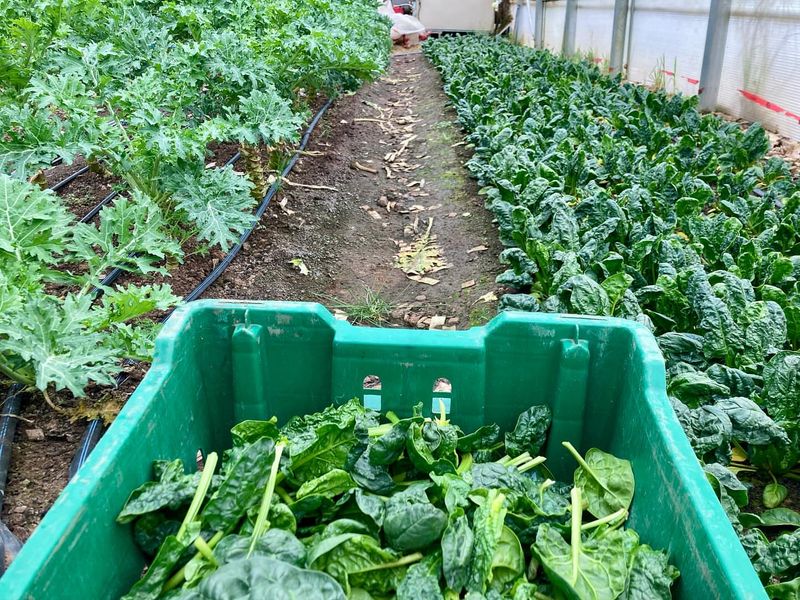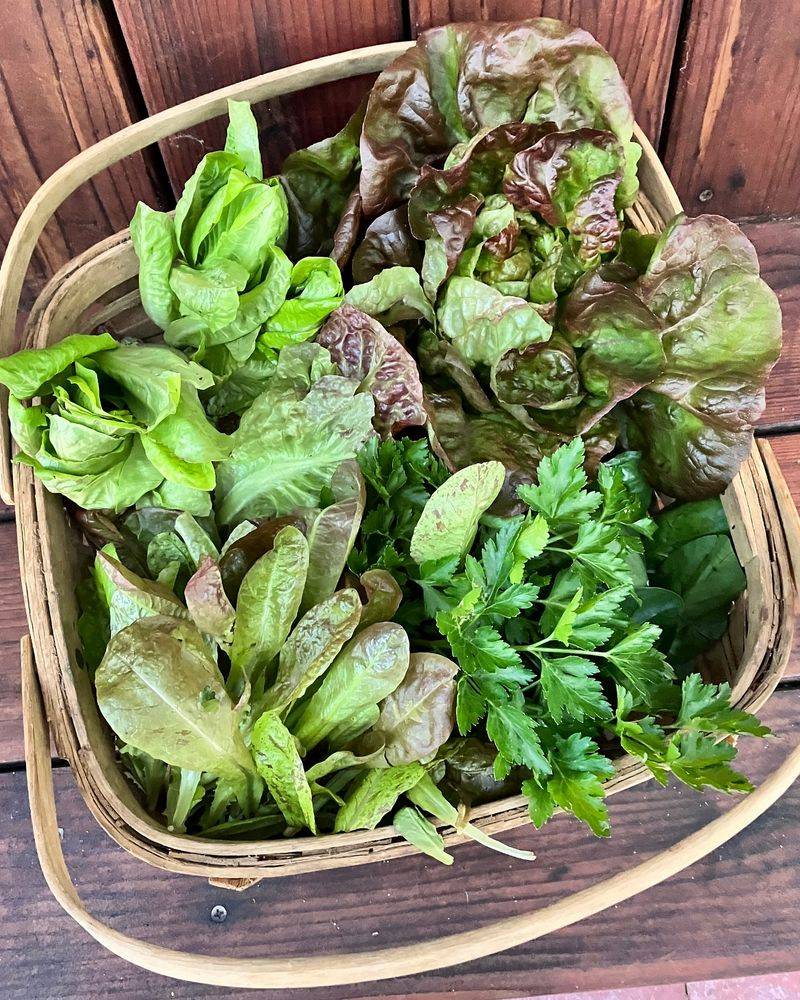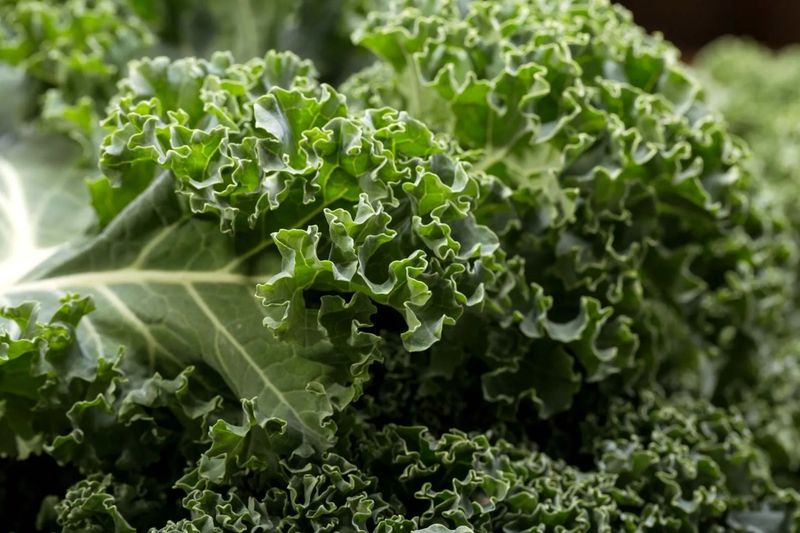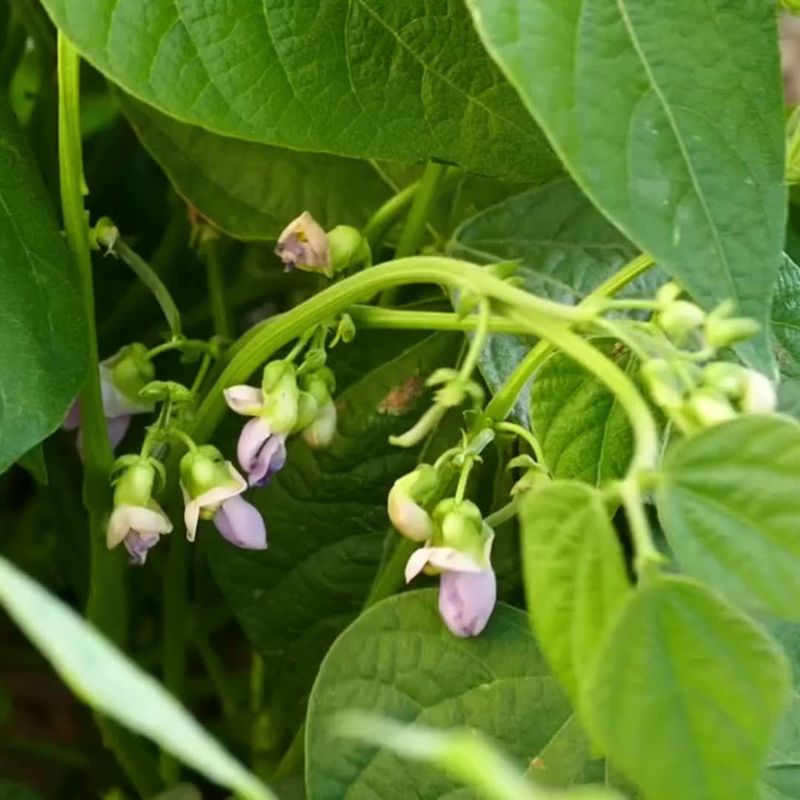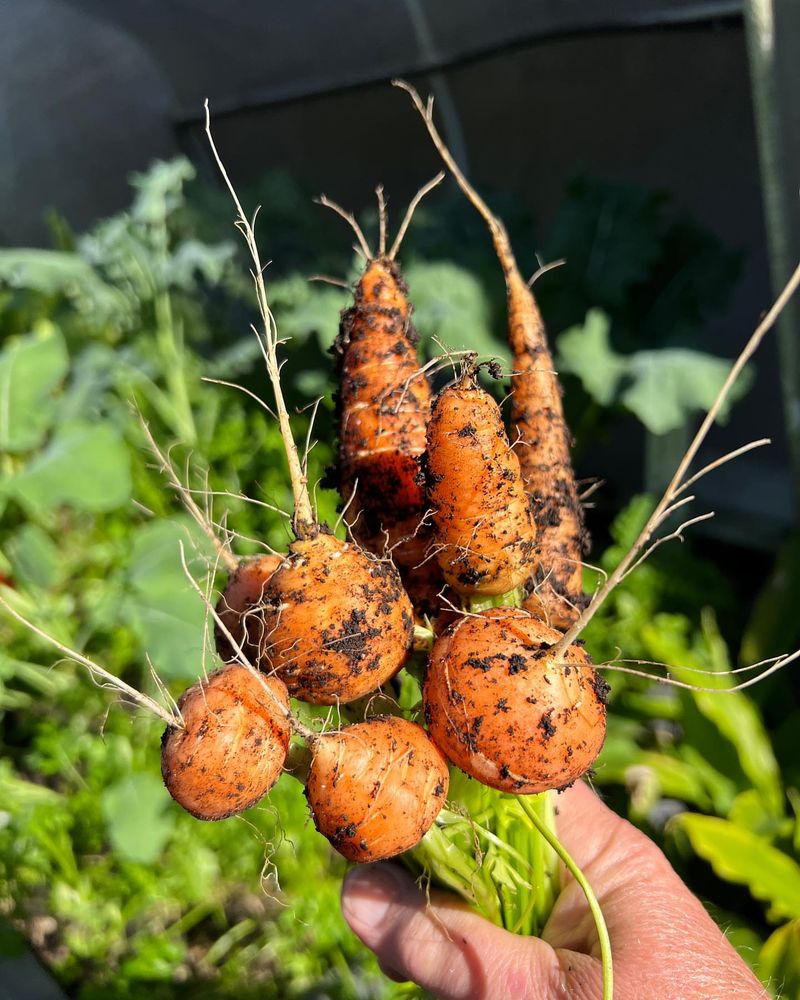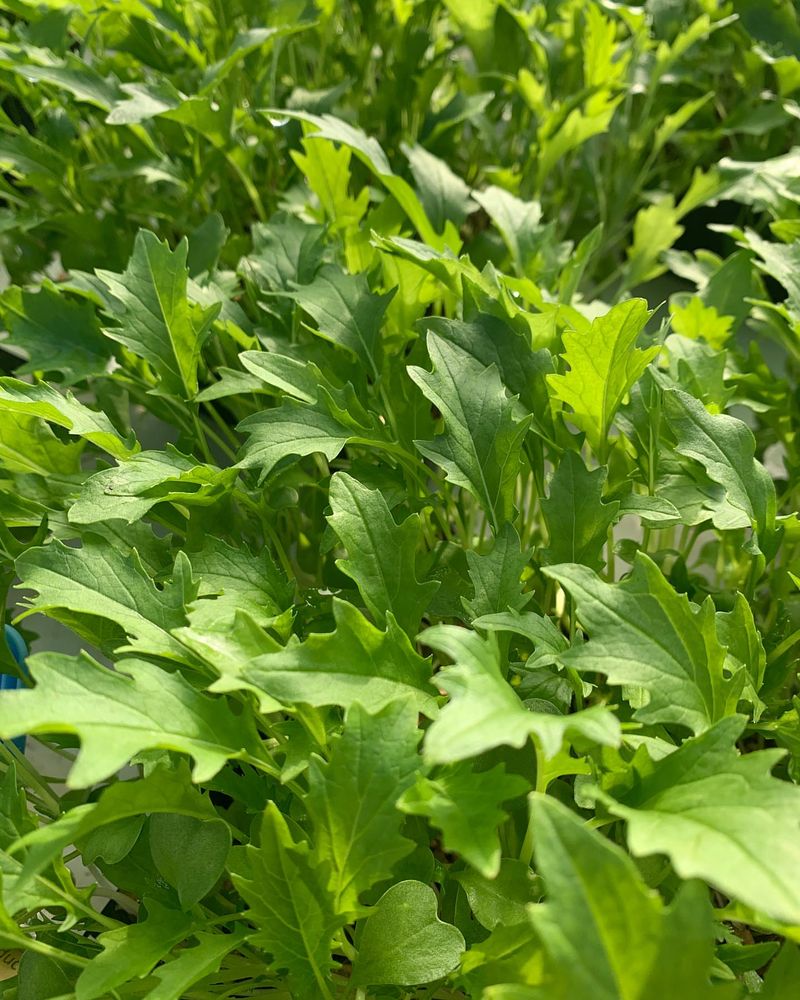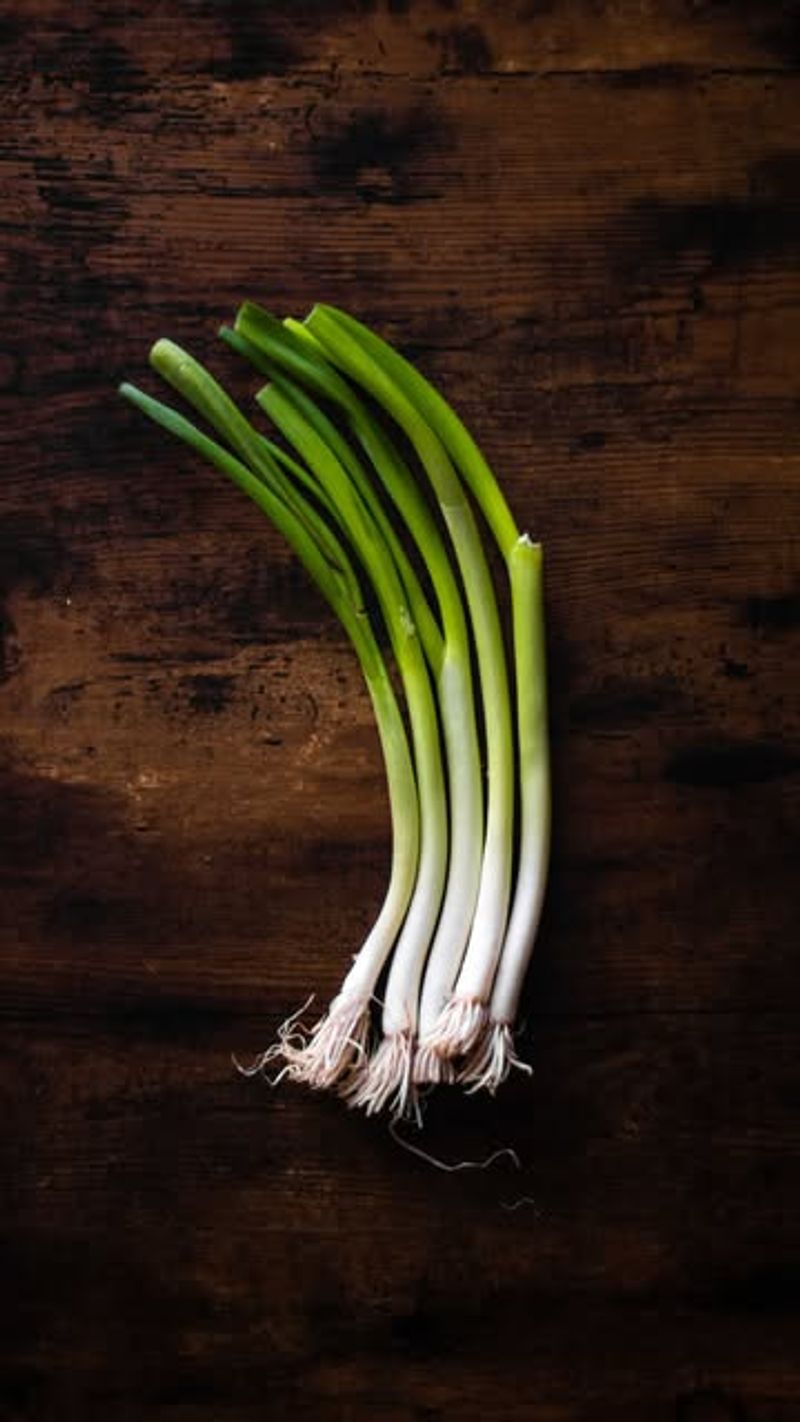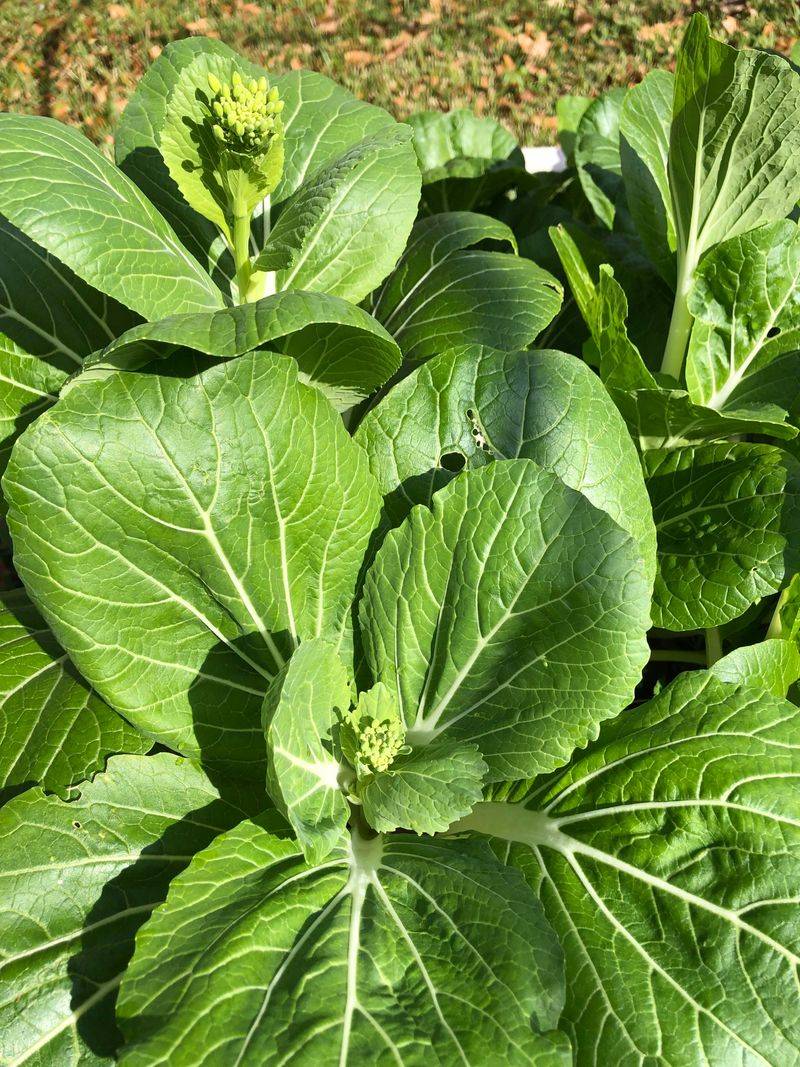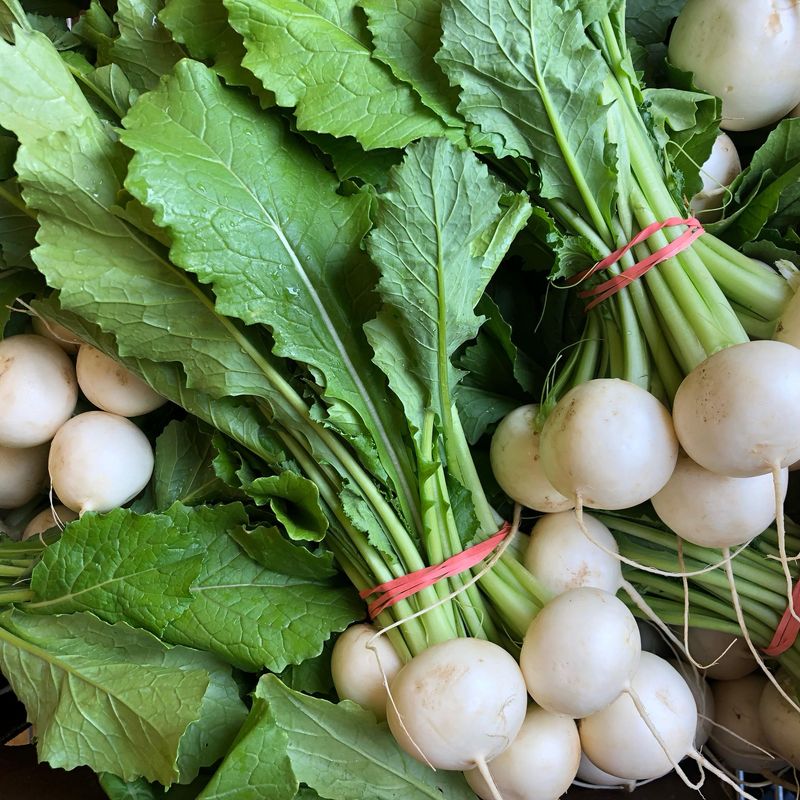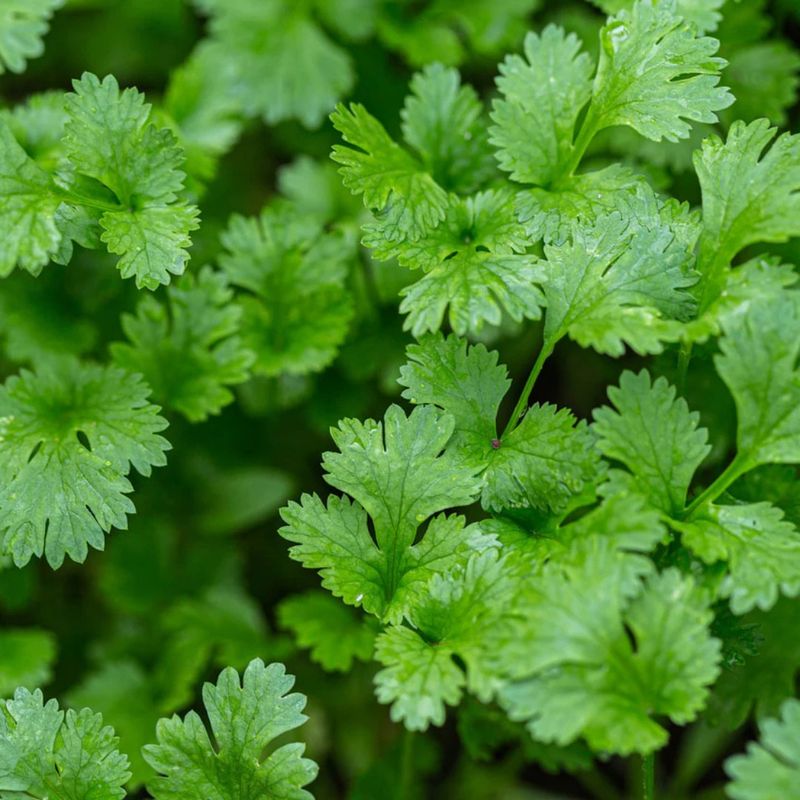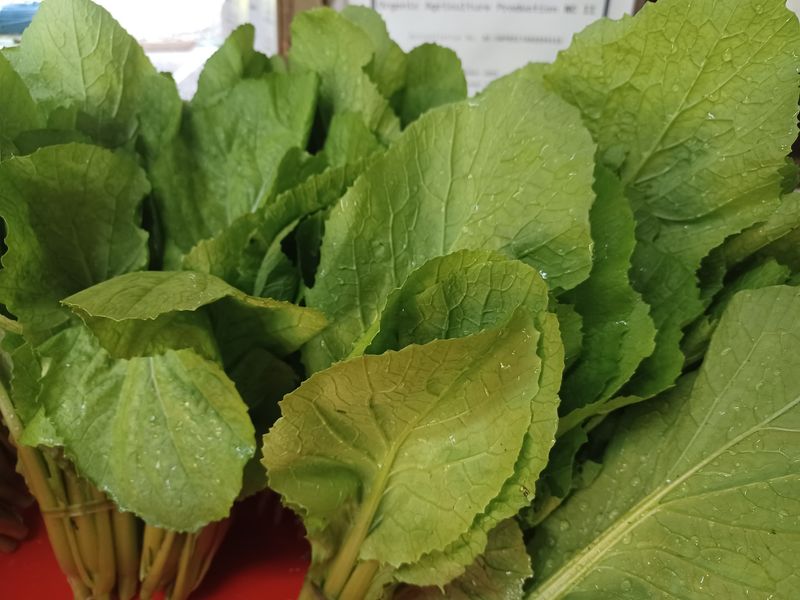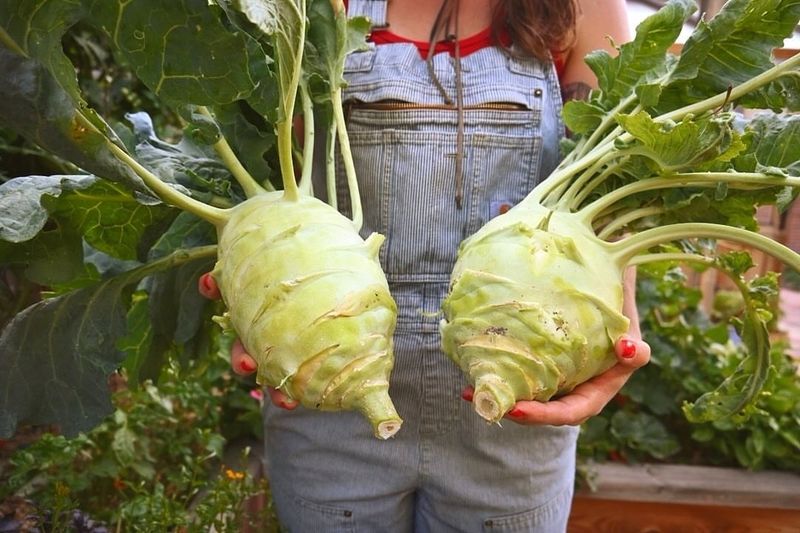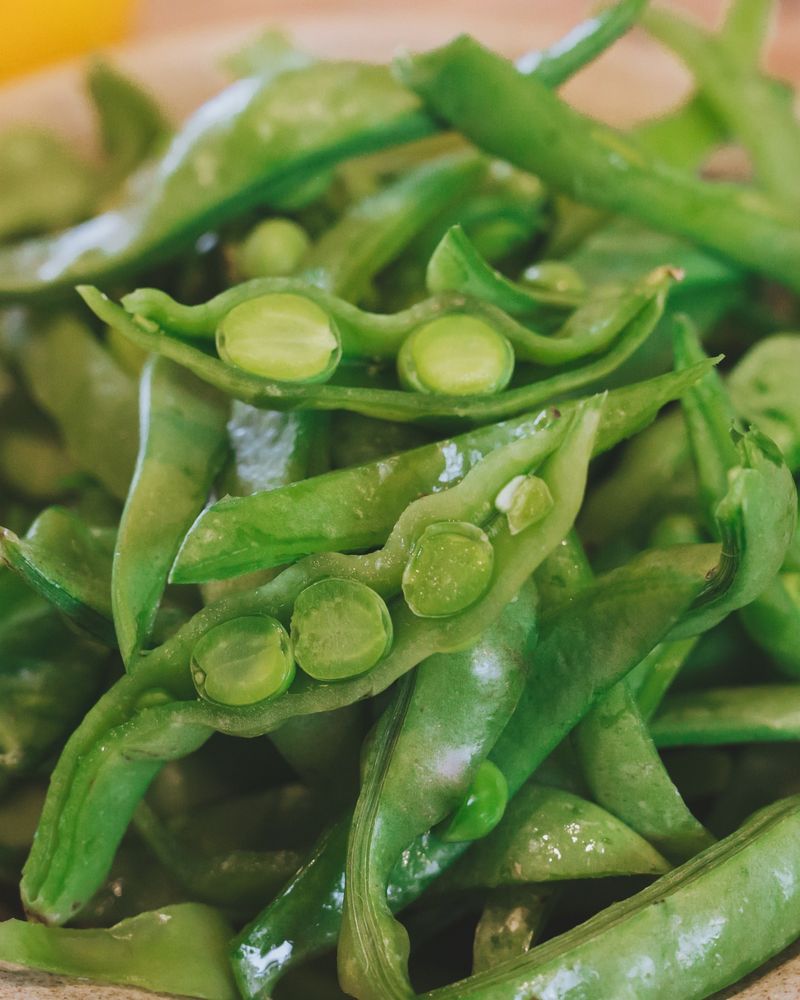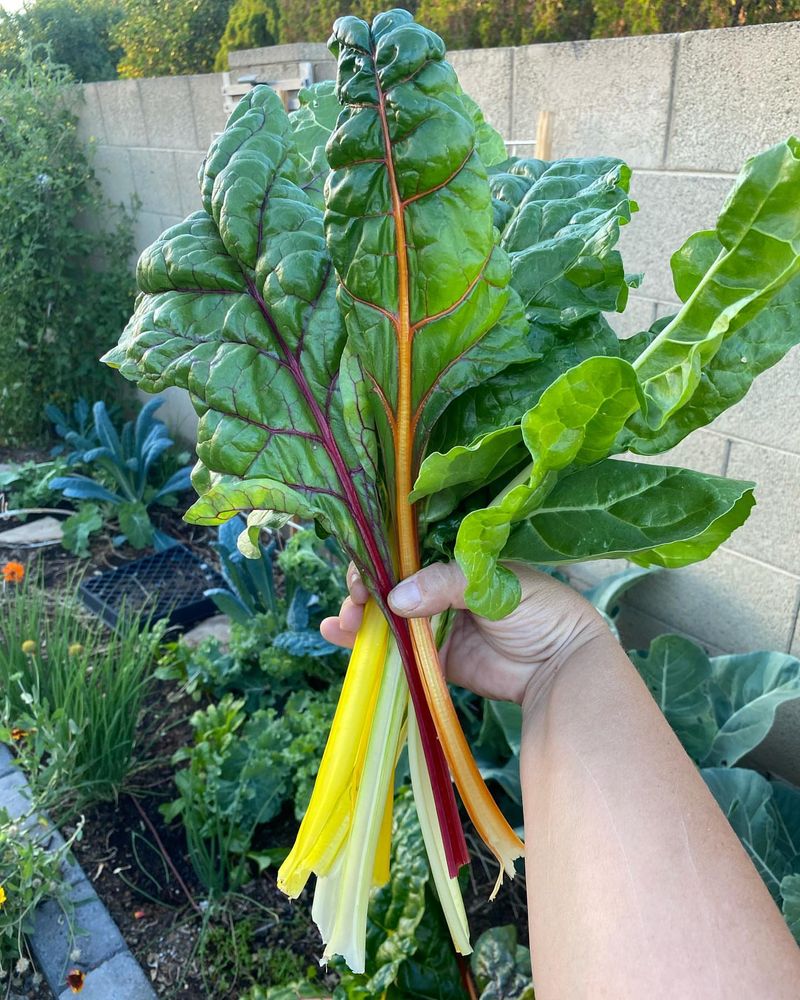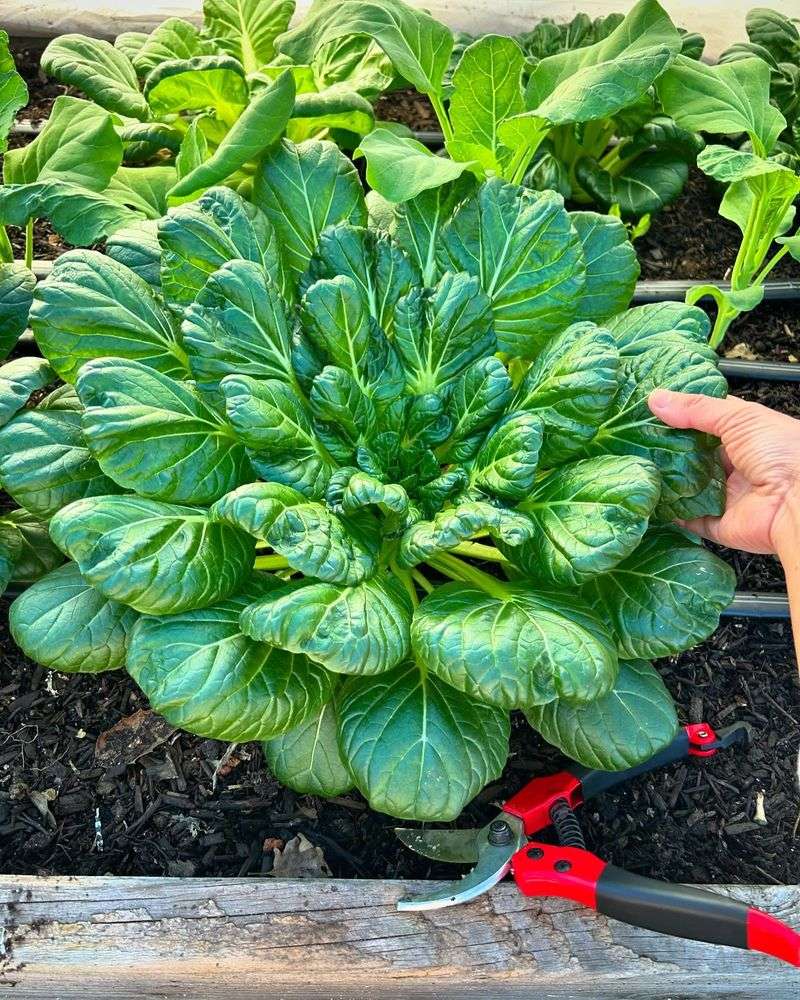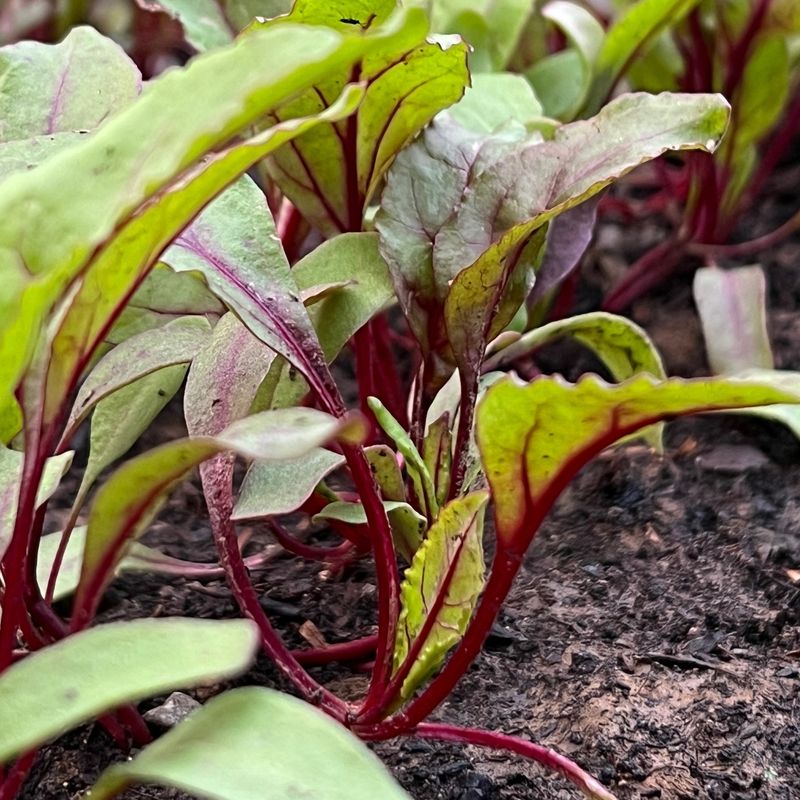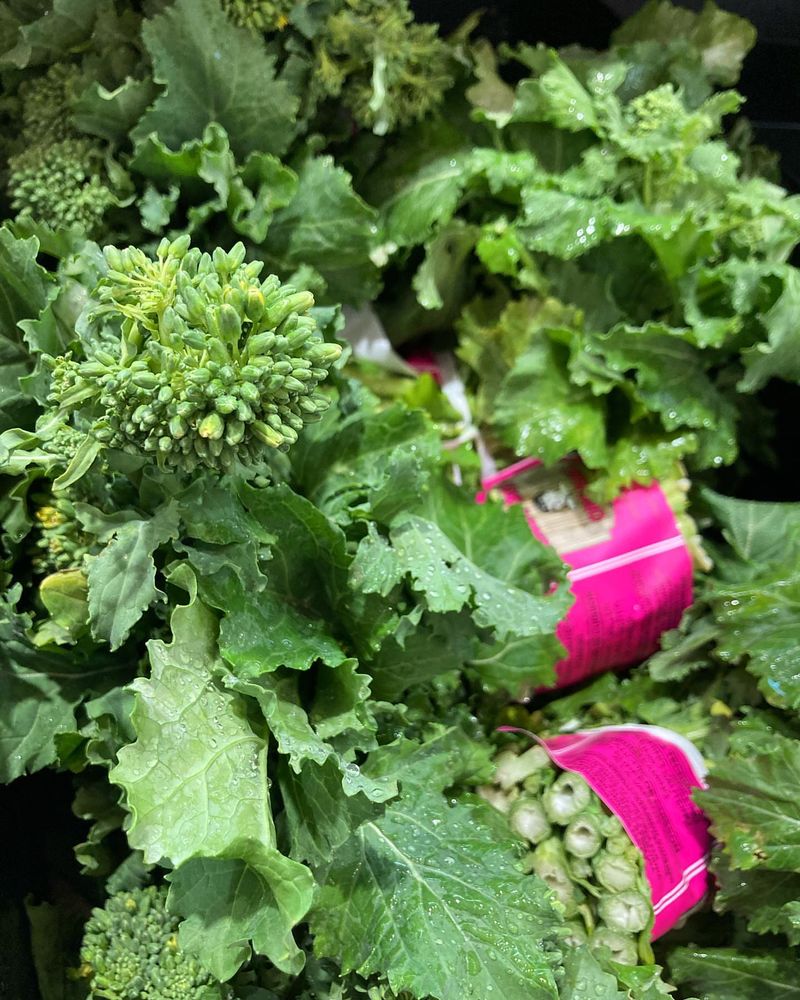Think it’s too late to plant? Think again. There’s still time to grow a garden full of fresh, delicious veggies—if you choose the right ones. These 19 fast-growing vegetables mature quickly and beat the frost, giving you one last round of homegrown goodness before the cold sets in.
Grab your seeds—it’s not over yet!
1. Radishes: From Seed to Table in 3 Weeks
Radishes are the speed demons of the vegetable world, ready to harvest in just 21-28 days. Their peppery crunch makes them perfect additions to salads and sandwiches. Plant seeds about half an inch deep and one inch apart, then thin seedlings to two inches apart once they sprout.
Keep soil consistently moist but not waterlogged. Cherry Belle and French Breakfast varieties are particularly quick to mature, giving you plenty of time before frost arrives.
2. Spinach: Cold-Hardy Leafy Green
Spinach actually prefers cooler temperatures, making it ideal for late-season planting. The leaves become sweeter after light frost exposure, improving their flavor. Sow seeds directly in the garden about half an inch deep and two inches apart.
For continuous harvesting, pick outer leaves first while letting the center continue growing. Savoy varieties like Bloomsdale have crinkled leaves that hold up well in cooler weather and can be harvested in about 40 days.
3. Arugula: Spicy Greens in Just 4 Weeks
Gardeners love arugula for its distinctive peppery flavor and incredibly quick growth cycle. The tangy leaves add zip to salads and can be ready to harvest in as little as 30 days. Scatter seeds thinly in rows and cover with a quarter-inch of soil.
For baby arugula, start harvesting when leaves reach two inches tall. Successive plantings every two weeks ensure continuous harvest, and the plants actually become more flavorful with a touch of frost.
4. Leaf Lettuce: The Cut-and-Come-Again Champion
Leaf lettuce varieties offer the perfect solution for impatient gardeners. Unlike head lettuce, you can begin harvesting outer leaves while the plant continues growing from the center. Plant seeds just a quarter-inch deep and thin seedlings to 4-6 inches apart.
Water gently but consistently to prevent bitter leaves. Red Sails, Oak Leaf, and Black Seeded Simpson varieties mature in just 45-50 days and tolerate light frost, extending your harvest season.
5. Kale: Frost-Loving Superfood
Kale actually gets tastier after experiencing frost, making it perfect for late-season planting. The cold converts starches to sugars, creating a sweeter, less bitter leaf. Plant seeds a quarter-inch deep and 12 inches apart, or closer if you plan to harvest baby kale.
Lacinato (dinosaur) and Red Russian varieties are particularly cold-hardy. Young leaves can be harvested in just 30 days, while full-sized leaves take about 50-60 days to mature.
6. Bush Beans: Quick Protein Source
Bush beans don’t require trellising and produce their entire crop at once, perfect for late-season planting. Look for varieties with 45-60 day maturity rates like Provider or Contender. Plant seeds one inch deep and two inches apart in rows.
Beans fix nitrogen in soil, improving your garden for next season. For maximum yield before frost, choose bush varieties rather than pole beans, as they concentrate their energy on producing beans quickly rather than growing vines.
7. Baby Carrots: Sweet Roots in 50 Days
Baby carrots aren’t just adorable – they’re practical for late-season planting because they mature faster than full-sized varieties. Round varieties like Paris Market or finger types like Little Finger can be ready in just 50-60 days.
Sow seeds a quarter-inch deep in loose, stone-free soil. Thin seedlings to one inch apart for baby varieties. Light frost actually improves carrot flavor by encouraging sugar development, making them sweeter for harvest.
8. Mizuna: Japanese Mustard Green
Mizuna’s feathery leaves bring mild peppery flavor to salads and stir-fries while maturing in just 40 days. This Asian green tolerates cold temperatures beautifully, continuing to produce even as temperatures drop. Sow seeds a quarter-inch deep and thin seedlings to 6 inches apart.
The plant’s attractive serrated leaves make it ornamental as well as delicious. Harvest outer leaves as needed while the center continues growing, extending your harvest period significantly.
9. Green Onions: From Seed to Plate in 30 Days
Green onions (scallions) provide quick gratification for impatient gardeners. Their slender stems and mild flavor develop in just 30 days from planting. Sow seeds a quarter-inch deep and one inch apart, harvesting when stems reach pencil thickness.
For even faster results, regrow from grocery store green onion bottoms. Tokyo Long White and Evergreen Bunching varieties perform especially well in cooler temperatures, continuing to produce until hard frost arrives.
10. Bok Choy: Asian Green Ready in 45 Days
Bok choy thrives in cooler weather, making it perfect for late-season planting. Its crunchy white stems and tender green leaves mature in just 45-50 days. Plant seeds half an inch deep and thin seedlings to 6 inches apart.
Baby bok choy varieties like Mei Qing Choi mature even faster – sometimes in just 30 days. The plants tolerate light frost and actually develop sweeter flavor when grown in cooler temperatures, perfect for stir-fries and soups.
11. Turnips: Dual-Purpose Vegetable
Turnips offer double the harvest – tender roots below and nutritious greens above. Early varieties like Tokyo Cross and Hakurei can be ready in just 30-40 days. Sow seeds half an inch deep and thin to 4 inches apart. For tender baby turnips, harvest when roots reach golf ball size.
The greens can be harvested even earlier than the roots, providing a quick crop of nutritious leaves similar to mustard greens in flavor.
12. Cilantro: Cool-Weather Herb
Cilantro actually performs better in fall than summer, as cool temperatures slow bolting (flowering). The flavorful leaves can be harvested just 3-4 weeks after planting. Sow seeds a quarter-inch deep, spacing them one inch apart.
Cilantro grows best when temperatures stay below 75°F, making it ideal for late-season gardens. For continuous harvest, sow small batches every two weeks and pick leaves regularly to encourage bushier growth.
13. Mustard Greens: Spicy Leaves in 40 Days
Mustard greens bring bold, spicy flavor to your table in just 40 days. Their large, ruffled leaves add visual interest to your garden and zesty punch to your meals. Plant seeds a quarter-inch deep and thin seedlings to 6 inches apart.
Southern Giant Curled and Red Giant varieties offer quick growth and cold tolerance. Young leaves can be harvested for milder flavor, while mature leaves develop more pungent taste – perfect for sautéing or adding to soups.
14. Kohlrabi: Space-Age Vegetable
Kohlrabi’s alien-looking bulbs form above ground and mature in just 45-60 days. These crisp, sweet vegetables taste like a cross between cabbage and broccoli stems. Sow seeds half an inch deep and thin seedlings to 6 inches apart.
Early varieties like Early White Vienna and Purple Vienna are particularly quick to mature. Harvest when bulbs reach tennis ball size for the most tender texture – larger bulbs can become woody.
15. Peas: Cool-Weather Protein Source
Peas thrive in cooler temperatures, making them excellent candidates for late-season planting. Sugar snap and snow pea varieties mature fastest – often in just 50-60 days. Plant seeds one inch deep and two inches apart, providing support for climbing varieties.
For fastest results, choose dwarf varieties like Tom Thumb or Sugar Ann. Peas can tolerate light frost, and their sweet flavor actually improves in cooler weather – perfect for extending your harvest season.
16. Swiss Chard: Colorful Cut-and-Come-Again Green
Swiss chard’s rainbow stems and nutritious leaves bring both beauty and flavor to your garden. Baby leaves can be harvested in just 30 days, with full-sized leaves ready in 50-60 days. Sow seeds half an inch deep and thin seedlings to 6 inches apart.
Bright Lights variety offers stems in yellow, pink, orange, and red for a stunning garden display. The plants tolerate light frost and continue producing until temperatures drop below 25°F, providing months of harvests.
17. Asian Greens: Tatsoi and Komatsuna
Lesser-known Asian greens like tatsoi (spoon mustard) and komatsuna (Japanese mustard spinach) mature in just 40-45 days. These nutritional powerhouses offer mild flavor and incredible cold tolerance. Sow seeds a quarter-inch deep and thin seedlings to 6 inches apart.
Tatsoi forms beautiful rosettes of spoon-shaped leaves, while komatsuna grows upright like spinach. Both can withstand temperatures down to 15°F, making them some of the most frost-tolerant greens available to home gardeners.
18. Beets: Roots and Greens in One Plant
Beets provide double value – nutritious roots and vitamin-rich greens from the same plant. Baby beets can be harvested in just 30 days, with full-sized roots ready in 50-60 days. Sow seeds half an inch deep, spacing clusters one inch apart.
Each “seed” is actually a fruit containing multiple seeds, so thinning is essential. Early varieties like Early Wonder and Babybeat mature fastest, perfect for late-season planting. The greens can be harvested even before roots form.
19. Broccoli Raab: Not Your Ordinary Broccoli
Broccoli raab (rapini) isn’t actually broccoli but a relative of turnips. Its tender stems, leaves, and small florets mature in just 40-45 days – much faster than regular broccoli. Sow seeds a quarter-inch deep and thin seedlings to 4 inches apart.
The entire plant is harvested at once when florets form but before flowers open. The slightly bitter, nutty flavor mellows with cooking, making it perfect for sautéing with garlic and olive oil in traditional Italian recipes.

